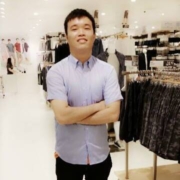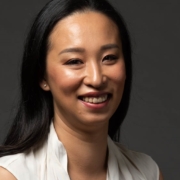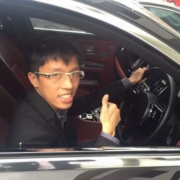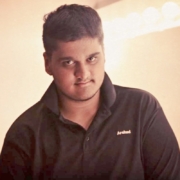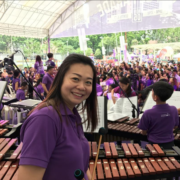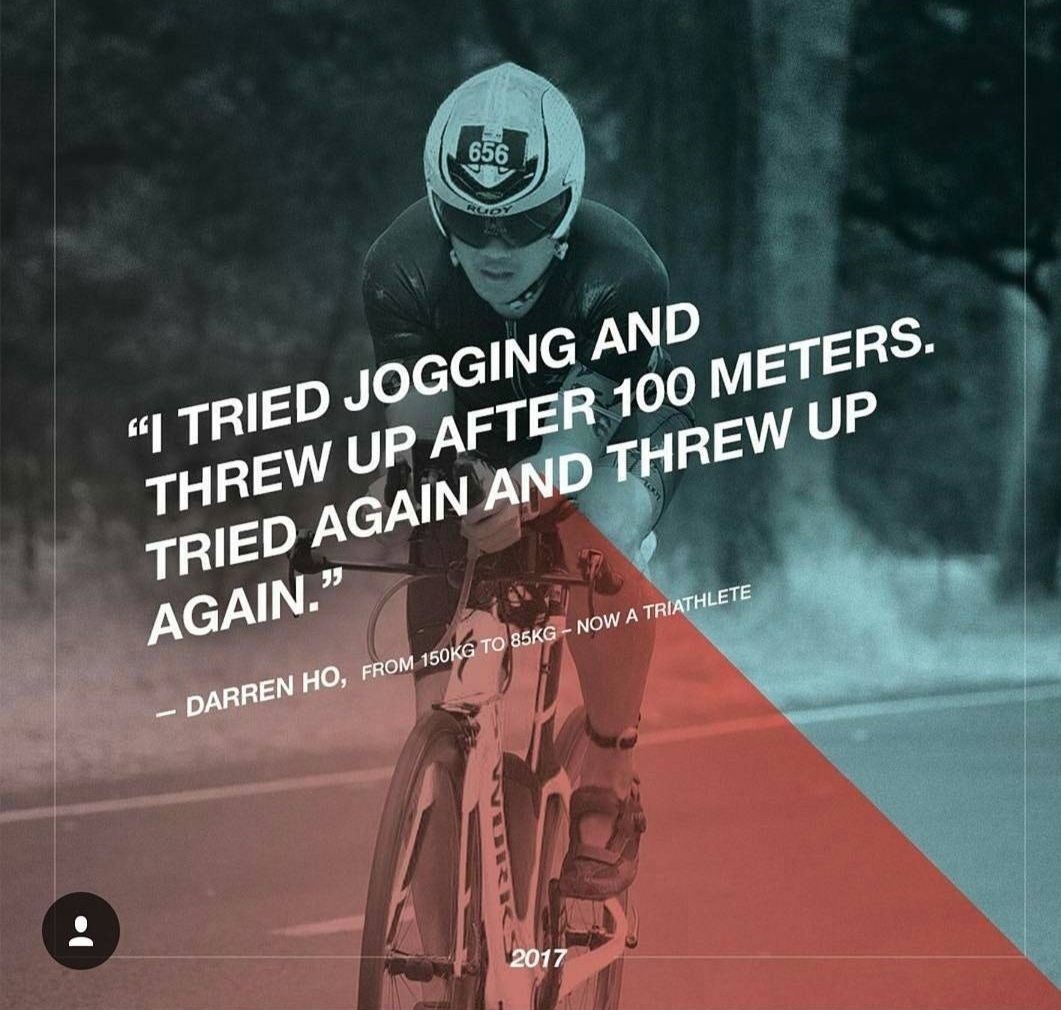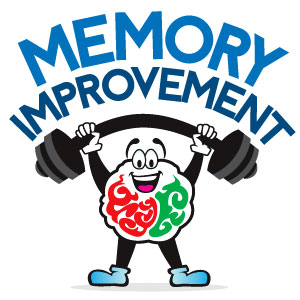Zero to Hero – Peter (The Saviour)
/in Zero To Heros /by B2SDo you know, there are 17 million people with Cerebral Palsy worldwide?!
Heyooo readers! I hope you have been doing great and working towards making a positive difference in the life of the society, people around you, or even to yourself. Like Cassandra despite her sensory challenge, she is making a positive change to the world.
Next, we are going to learn about this individual who when from a zero to a hero even after being diagnosed from a disorder named, Cerebral Palsy. Cerebral Palsy? What is that? Cerebral Palsy is a group of disorders that affects muscle tone, movement, and motor skills which hinders the body’s ability to move in a coordinated and purposeful way. This disorder is caused by damages to the immature brain as it develops, most often before birth.
But the surprising fact was, the doctors never saw anything wrong in Peter. He was deemed a healthy baby.
Peter is the name of this Zero to Hero, who is now a Singapore team Paralympics soccer player who is playing mainly as a goalkeeper/defender and saved lots of incoming goals to the net. Woohoo, what a SAVIOUR!!
psst… Oliver Kahn, the German national Goalkeeper who won several titles with Bayern München, the UEFA champions league, the UEFA cup, the intercontinental cup, eight national championships, and six national cups, is Peter’s idol and a role model as a goalkeeper.
Birth
Anyway.. life was as per usual for Peter, but the only downside was that he kept on falling whenever he tried to walk. At the age of 5 years old, Peter’s kindergarten teacher called his parents to give them the option of shifting him out of the current school to another suitable school. This was because he frequently picked fights with his fellow school mates.
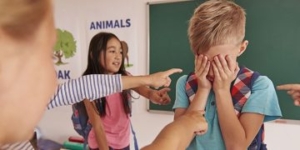
But when I asked him why he did that, his answer was, “the students always made fun of my legs and the way I walked and that got me sad and frustrated”. If anyone was in Peter’s “shoes”, they might have reacted that way too. Due to this incident of his issues in the school and his constant falls, his parents decided to check with the doctor about this issue.
After thorough medical checks, the doctor found out that both his legs were severely fractured or broken into fragments, because of constant falls that had to be on the cast. Surprisingly, the doctor also found that he has a neurological disorder, named Cerebral Palsy.
It took Peter 1 year to recover and walk. But during his recovery period, he frequently gets spasm on his entire right side of the body.
After removing his cast, Peter’s 2nd elder brother among his 2 elder brothers, decided to bring him to a street soccer court to play soccer. Or more of getting his younger brother (Peter) to get constant painful hit by the fast-flying ball which is kicked by his friend’s and him (2nd elder brother). Whenever he goes back home after all the bruises from the hit, his Mum will ask him what happened. And for that, Peter will always say a false excuse and get away from it.
Anyway, the purpose of his second brother’s action was, to get Peter’s upper body seasoned by any future whack’s, hit or bully by anyone else. But to think about it, is that the right way? Or is that the best way? Maybe yes, maybe not, it is subjective. But whatever it is, it has led Peter to be a stronger individual now.
Primary School

At 7 years old, Peter was enrolled in the Spastic Children Association for 7 years. Over there he learned skills to survive in the society, like hand motor skills, communication, life skills, etc, with his strict teachers. Through his CCA (Co-Curricular Activities), in track and field and soccer, Peter managed to find new friends. Despite those supportive friends, he also had school mates who chose to pick on him.
They called him ‘disheartening’ names because of his walk which had a limp, pushed him, and even chose to throw his things around.
There was this time when he was walking, few of the boys snatched his bag and started throwing them around at each other, as though playing the game “monkey”. Peter got frustrated and shouted at one of them to stop. Times were even tough when he was struggling to cope during his PSLE period. Unfortunately, he paid more attention on his CCAs as a senior to coach his juniors.
But luckily,
he managed to pass his PSLE with an average aggregate score from the help of his teachers and friends.
Secondary school

After that, he graduated and got his 1st choice among the 3 choices of school in Queensway Secondary School. But to be able to enter the school officially, he had to go through an official registration during the registration day with the school. But there is something we must take note.
By the time he enrolled in secondary 1, he was already 14 years old. Remember, he studied at Spastic Children Association, for 7 years, which is a year extra from the regular age group of 6 years. The reason was that Peter failed his PSLE (Primary School Leaving Examination) at his first attempt, hence he had to retake his PSLE at the following year.
During the registration, that intrigued a few parents to look at him and comment things like, “this boy look old”, “Eh, this guy is slow ah”, “he looks stupid”, also, “this guy, definitely cannot cope with his studies one”. His father who overheard one of the comments, when ahead to confront the other parent and even when direct to other teachers in Queensway secondary school to make a complain.
Hmm… I guess it was the lack of awareness and empathy by the parents. Nevertheless, he managed to get enrolled as an NT (Normal Technical) student in the school.
That was when his journey to study in a mainstream school began, and it was not an easy one for Peter. His younger classmates always questioned him about his maturity. He had extra subjects in secondary school which he had to study compared to his time in Spastic Children Association . And he was unable to cope with his mother tongue as it was not taught in his primary school, took a toll out of him. Despite all of that, Peter pushed on.
Furthermore, Peter’s interest in playing soccer never died off since he was young but instead, it grew. Almost every recess (break) time Peter will rush to the “so-called”, street soccer court in the school to play street soccer with his school mates. And almost always, he plays as a goalkeeper during the matches.
He did not do well at first, but his passion in that game allowed him to climb the ropes and become better gradually. Not only him, but the interest in some of his other school mates allowed them to even play with a piece of a crashed bottle, which was a replacement to a soccer ball. What a way to play soccer!
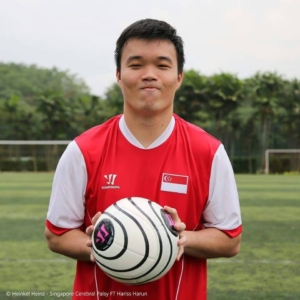
At secondary 2, when his studies were slipping away, Peter joined the free tuition service given by AWWA (Asian Women’s Welfare Association). That helped him to fairly increase his knowledge in his education and kept him just above failing range in his subjects. But it did not stop there, because of his interest in soccer he joined the soccer clinic which was available in AWWA.
A Funny Moment
Back in his secondary school, there was this one funny and embarrassing incident which happened during an event where Peter was playing as a goalkeeper in one of the soccer matches during recess. One of his school mates dribbled the ball towards him to score, and at that moment Peter was determined to prevent the ball from being kicked into the goal post which was at the back of him. After a hard kick, his school mate sends the ball straight towards the goal post.
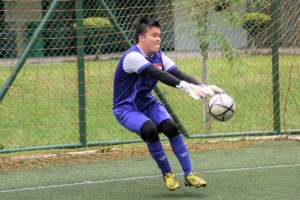
The determined Peter took a deep breath and took an acute dive towards the fast approaching ball. It must be his constant practice in the court during every recess time, Peter made a tremendous save! But only to realize, in that process he got his pants split. It was an embarrassing but hilarious moment for Peter.
But good news, one of his teachers who will watch over him playing soccer at times, saw his potential and praised him. What a wonderful comeback!
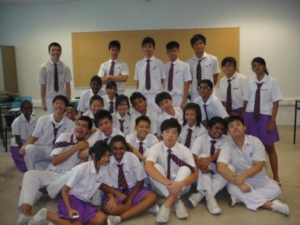
The serious moment
However, in secondary 4 during the year of his N-level, Peter received a “public caning” in the class by the Discipline Master. This was for punching the class glass window which broke into pieces because of intense anger. This anger was triggered by one of his classmates who criticised his learning ability and comparing his studies. Forming not only a wave of intense anger, but this also made Peter feel low. But what did not help was, the public caning he received, which created only confusion and questions in him on whether he deserved the caning.
To think about it now, was it necessary? Did it solve the problem? Or did it create a positive outcome?
Despite the confusion, Peter put in more effort to pass his N-level and graduate to ITE.
ITE life
Peter managed to enroll himself into the 2nd year of Macpherson Institute of Technical Education (ITE) in the Nitec course of Electrical Instrumentation. Despite missing his 1st intake to be enrolled in the ITE as all the courses he wanted were taken up.
During his first semester, Peter was nearly debarred from the module he was doing because of his poor academic performance. He then decided that he has no available option of failing the module given his age, to get the certificate and the fear of going to the serve the nation early if he deferred his current studies. (Yes, despite Cerebral Palsy he had to go to serve the nation). He strived harder for the right result and adopted the “NEVER GIVE UP” mentality.
Time passed by and it was time for Peter to collect semester 1 result. And you know what, all his hardwork paid off giving him the opportunity to pass that module with a high score. Kudos Peter!
But after that pleasant incident, complacency set in for Peter and he started to go back to his lazy ways. But whatever it was, Peter was mindful to always keep up to education goals. And hence he managed to graduate successfully.
Army life
Not long after he graduated from ITE, he got a letter from MINDEF (Ministry of Defence) Singapore, requesting to serve the National Service like all Singaporean boys in the Army. BMT (Basic Military Training) Kranji camp as a storeman under the transport section, after completing his BMT (Basic Military Training) phase. At first Peter had an intense fear of adapting to the army lifestyle given his condition of a mild Cerebral Palsy. But some people over there were supportive.
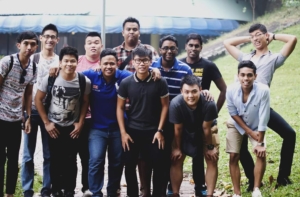
Army mates outing
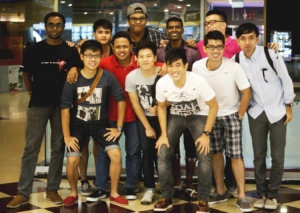
Army mates outing
Besides the kind and supportive people, there were also “crazy” people or can I say people who were mentally unstable, that Peter met along the way.
Example, getting hurled vulgarity at, getting shirt tugged for no real reason and walking away, etc.
One such person was Ah Boy (a random name I have picked), who used to keep a pocket knife with him always. One fine day in the camp, he beat up a few army officials (I do not know for what reason). This matter escalated to higher officials and Ah Boy was sentenced to a jail term in the detention barrack (DB). This is where Peter comes into the story.
Given his role as a storeman under the transport section, Peter was also tasked to escort the prisoners to the detention barrack. That was what Peter had to do for Ah Boy, escort him safely to the detention barrack and not letting him escape. Despite the slight fear, Peter firmly clutched the hands of Ah Boy which was brought to Ah Boy’s back with a handcuff attached to the hands of Peter. Imagine if Ah Boy attempted to run, it will drag Peter along too. But Peter did not let that happen and managed to send him to the detention barrack. Bravo!!
During his final months in the army, Peter continued to learn more about logistics and even has mentored a person in logistics who finished serving his sentence in the DB. Awesome leadership path.
Job Opportunity
After his ORD (Operationally Ready Date) on 2013 December, Peter found a job in the Swiss post as data entry and logistic personal. A year later he dropped out of the job as he couldn’t cope with the management style given his Cerebral Palsy. He then when doing odd jobs like a technician, admin, and etc. This when on till 2015. After that, he found a job as warehouse packer in Sportslink, where he is in till today. Wow, such long service.
He wished to say a special thanks to Mr. David, the Head of the Warehouse Department who gave him advices, suggestions, and support during the job.
And he lived happily ever after!!! The end.
Shining through soccer
Wait!!! Remember during the introduction I mentioned that Peter is now a goalkeeper in the Paralympics soccer team in Singapore. Yes, that is true. Despite having Cerebral Palsy, had made many appearances and various opportunities to travel and play at overseas ASEAN countries. Like Abu Dhabi in Dubai in 2012 for AFC (Asia Football Confederation). There, he was part of the international competition against top teams like Iran, Australia, Korea, Jordan, and UAE (United Arab Emirates).
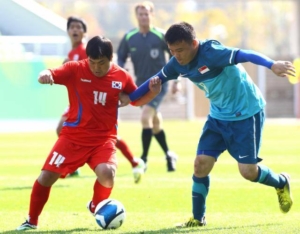
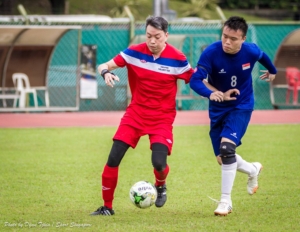
But unfortunately, on that trip, Peter slit his wrist in a small accident. It wasn’t so serious, but it was serious enough to disallow him to play his primary role as a goalkeeper for the tournament. This got Peter to feel very disappointed and sad. But his coach, Zainudeen had another alternative. To position Peter as a right-back defender. And you know what, throughout the whole tournament Peter managed to score 1 goal and pulled the team to win 3rd in the tournament. Awesome!
That was not all. In 2013 the Singapore Paralympic team together with Peter played the 7th ASEAN Para Games in Myanmar and came in 2nd.
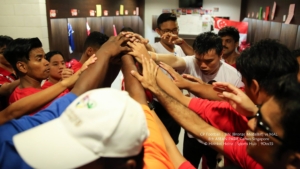
“Together, let’s do our best”
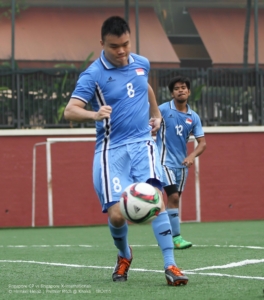
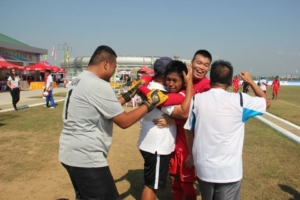
Tears of joy after winning the Cup.
And it when on.
Next is in 2020, where he and his team are going to play the ASEAN Para Games in the Philippines with top ASEAN teams. Like Thailand, Indonesia, Cambodia, Myanmar and of course the host themselves, Philippines.
Let’s all support and wish for team Singapore’s Paralympic soccer team to win the tournament and achieve the ultimate victory.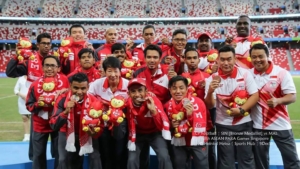
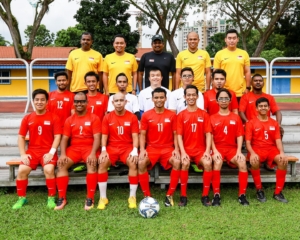
Future desire
When I asked about his future desires, Peter just told me these simple wishes.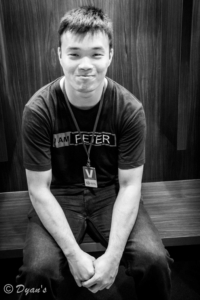
1. To stay active,
2. Help those challenged individuals to achieve their goals and
3. Continue to do volunteering.
What a humble guy with humble and empowering desires.
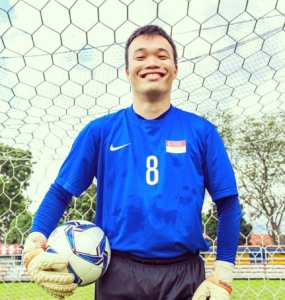
Message to the world
But before we finished off our conversation, Peter wanted to tell something to the world. And it was,
“Never stop doing what you can do, give it your best! & never stop believing till you try!!!”
Not everyone is aware about Cerebral Palsy and it’s challenges. I hope this Blog will tell you more.
Let’s all do our part to be aware of such challenges in our country. And believe in ourselves, go beyond our limits, challenges, hurdles, obstacles and become our BEST!!!
Let’s connect on social media:
Do give us your comment about this blog. Also, do like and share the Believe to Success social media and share this blog to your social media. Click on ‘Facebook’ and ‘Instagram‘ for more pictures and videos. Let’s connect on social media. CHEERS!
Zero To Hero – Cassandra (The change maker)
/in Zero To Heros /by B2S“Just because a man lacks the use of his eyes doesn’t mean he lacks vision.”. Well said by Stevie Wonder, the blind American singer, songwriter, musician, record producer and …. a multi-instrumentalist. Phewwww!! A man with lots of titles. AMAZING!!
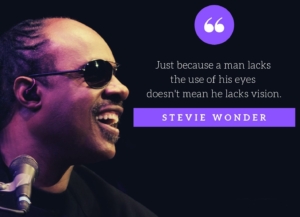
Stevie Wonder
Like him, there is also this lady. Who developed visual impairment, because of a genetic eye disorder named, Stargardt at 8 years old. Hmm.. doesn’t it sound like some science-fiction, space movie, named Star Wars? But in fact, it is a muscular degeneration that causes progressive vision loss, which was named after the German ophthalmologist Karl Stargardt.

Stargardt disease
But this did not stop the beautiful and determined Cassandra, that is her name, from marching forward to a successful position where she is at right now.
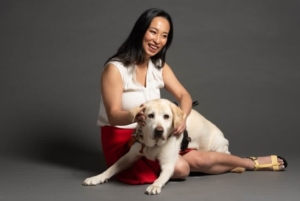
Cassandra was born like any healthy baby, sweet and pleasant. Things were beautiful for her till she turned 2, where she had to attend pre-school childcare which was situated at Outram road. She absolutely hated it and will cry and request for her Dad, who was busy as a chef in a five-star hotel. But “not every day is Sunday”. She slowly got used to that.
When Cassandra turned 4, she was gifted with a cute baby brother, who she will spend most of her time with. Slowly it faded off after leaving Kindergarten, where she was enrolled in Convent of the Holy Infant Jesus (CHIJ) as a Primary 1 student. Things were going good for her, especially during her mid-year examination where Cassandra only got 1-mark short out of the full marks. This made the school even more exciting for Cassandra.
Discovery of the Stargardt disease
But not for long. As she started to receive complains from her teachers for her bad handwriting, incomplete homework and slipping grades for her weekly quiz.
She found it harder and harder to have a suitable handwriting, proper reading and keeping up with what was being taught in the class. Knowing these issues her mother was worried. Suspecting something was wrong, she then took her to visit the eye doctor who then will ask her to read alphabets, numbers and ask her many questions. After that, she had liquids dropped in her eye for dilation (pupil becoming bigger) and asked to wear different glasses. After everything, the doctor prescribed Cassandra with a new set of glasses, which was of no use to her vision.

Ophthalmologists
But Cassandra and her mother kept persisted and visited different doctors for a year, where eventually one of the doctors diagnosed Cassandra with the Stargardt disease. Not being able to accept that, her parents wanted to fly her over to Cassandra’s Mom’s sister house in the USA as the doctors there have advance techniques and expertise to fix eye sights. After flying to the USA, with the happiness that she is going to be cured, Cassandra was brought to many doctors there too, only to find out the diagnosis was true and irreversible and has a chance of deteriorating. (That is surely heart-breaking news for anyone).
The next day her Mom’s sister, aunty Annie brought her to a child psychiatrist, Dr. Octavio who was there to assist Cassandra to deal with her possible difficult situation in life. Dr. Octavio spoke to her, empathise her situation, found her few tools and offered her many suggestions to aid in her daily life.
Singapore Society For The Visually Handicap
After flying back to Singapore life seem different and even more challenging for Cassandra.
Her test papers in school had to be enlarged to A3 sheets to allow her to see the words better, even though her sight was worsening for every few months. That caused her to fail her primary 4 examinations, where she took extra of 2
years to complete her primary school education. During her last year of primary school education was when
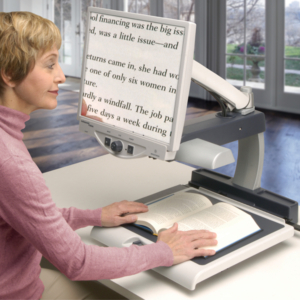
Closed Circuit Television
Cassandra when to Singapore School For The Visually Handicapped (SSVH). There is where Cassandra, who was brushed aside most of the times by her peers in the previous school, started making more friends who are also blind/visually impaired. And there is where she learned to travel independently from her other blind friends.
During her Primary School Leaving Examination (PSLE) in SSVH, she got help from the school by getting a Closed-Circuit Television (CCTV) which enlarged each alphabet in her question paper. The appropriate help from SSVH got Cassandra to graduate to the express stream in secondary school. Woohooo!
Secondary school
After which, Cassandra managed to go to Dunearn Secondary School, where there was a part-time resource teacher to assist her especially when she can’t read or write in braille. The teenage years were hard for Cassandra, especially when she had a deteriorating sight.
There was once in the early morning, Cassandra was rushing by running to catch her bus to school. As she was running across the road to catch her bus, she ran straight to a lamppost which was on the road divider, “Bang!”. She ended up fracturing her facial bone above her brow. “Ouch!”. Also because of her loss of vision, she was excused from a few subjects. This meant, lesser subject for her exams and lesser interaction about a common topic, etc, with her school friends. (Lesser social life)
But at the age of 15, Cassandra was representing Singapore in International sports for People with Disability in Swimming already. Which got her to travel to different parts of the world for the competitions. This got her an inaugural Disabled Sports Woman of the Year for her achievement in swimming by the then Singapore Sports Council for the Disabled (SSCD), which was awarded by Minister for the Ministry of Community Development (MCD). Other than the trophy, the award included an SGD$1000 cheque and a pair of air tickets to Jakarta.
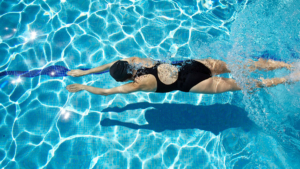
Tertiary
But once it was time for Cassandra to fly back to Singapore, the inspiration, motivation strive and the potential for tomorrow, will fall flat. Is it because of the culture/society then?
In the 1990s people who are blind or visually impaired do not pursue tertiary education because regardless of education, employers in Singapore were not willing to hire people who are blind or visually impaired. Even if they do, they get low paying jobs. But Cassandra decided to go beyond the odds and take up Disability studies in Adelaide, South Australia. Eventually, moving into a job which involves door to door sales.
She also picked up sports like bowling and cycling around 2002, a few years after getting her award. Wow!!!
Marriage
And she also got married after meeting a volunteer in the bowling clinic. They befriended each other, dated and eventually decided to exchange the ring. And at the age of 25, she gave birth to a beautiful little princess.
There were challenges Cassandra faced along the way when taking care of her daughter. Like feeding her and showering her. But the more hurting one was when Cassandra hears, “take good care of your poor Mom who cannot see”, to her daughter or calling her spouse a saint for marrying someone with a disability. She says, “Marrying someone with a disability only works when we accept that people with disabilities don’t have love lives or aren’t worthy partners”.
But eventually, their marriage did not last long, because of their difference they divorced.

Guide Dog
However, she still had her daughter whom she loved to be with. Thus, she wanted to be living a more independent life to support herself and her daughter. Aside from earning a monthly salary from street busking, she also explored other independent mobility skills. That was when she chanced upon the knowledge of a guide dog which allows independent mobility and is a guardian angel for the blind. She immediately did further research, got herself some route planning apps (thanks to Steve Jobs), and mobility training.
Journey to independence
Meanwhile, she decided to study Counselling psychology, a study she truly wanted and was inspired by the psychologist, Dr. Octavio. She tried applying in some schools which turned her down, except for Executive Counselling and Training Academy (ECTA). She enrolled in the Master of Social Science for 2 years, where she had to learn theory and do practicum too. Life in the university was pretty smooth. And in the last year of her studies. Cassandra was recommended, by her classmate to be a counselor for the inmates in the prison. She was excited about the opportunity which lasted for only 4 months because she resigned after that. The main reason was that her application to the prison to give counseling to the inmates was rejected. Which is the main gist of the job.

Prison inmates
She pushed on to go for interviews after interviews to find for a job. But because of the employer’s mindset then, on people with disability, she couldn’t get one. But that “Never Give-up” spirit of hers, prompt her to start her own counseling clinic named, “The Safe Harbour Counselling Centre” with the help of her university friend in 2011. Which is now located at Tanglin Shopping Centre, Singapore.
Meanwhile, Cassandra had a call from the Guide Dog Association of the Blind (GDAB) in Singapore, where she called previously to explore using a guide dog, said that there was a match between her orientation and another guide dog at Melbourne, in Guide Dog Victoria, found. She then flew all the way to Melbourne, got a guide-dog management lesson and training for herself and with her newfound guide dog named, Esme.
She then flew all the way to Melbourne, got a guide-dog management lesson and training for herself and with her newfound guide dog named, Esme.
With more confidence, fuelling her independence, Cassandra was now back in Singapore. And she lived happily ever after. THE END…..
Challenges
I hope I could say that. But newer challenges came her way back in Singapore. Because society was not quite ready to see and accept a guide dog.
Here is a list of few of the problems Cassandra faced with her guide dog for her blindness:
- At the start, she couldn’t even get permission to enter Tanglin Shopping Centre, with her guide dog to where her counseling clinic is located.
- Stopped by an officer at Promenade train station because the officer did not accept that Cassandra was blind and the dog was a guide dog.
- She was photographed in the train, (I think for STOMP), for bringing a dog (a guide dog) in the train.
- One hot day when she was waiting for a bus with her daughter and Esme(guide dog) in the bus stop. 20 to 30 buses just when by. But when one bus eventually stopped to pick them up, a bus inspector came up in the future stops and got them to alight.
- When Cassandra was visiting the library with Esme (guide dog), the staff members will scream at them to take the dog out and call the security on them.
- Someone even threw an icy drink on her for bringing a dog in a shopping mall.
- When a taxi driver physically injures Cassandra because of discrimination against guide dog. This happened when the driver started driving off when Cassandra with Esme (guide dog) was pleading for the driver to ferry them with half of her body still in the doorway, causing the door hitting her.

“I believe that each one of us with disabilities, has a unique place in the world and serves a purpose in the bigger schemes of things. …. we all have a role to play to make the world we share a welcoming, liveable place for all.”. A statement made by Cassandra despite all those injustices caused by a faulty mindset or should I say the lack of appropriate awareness to the society, by society.
Cassandra was awarded the Singapore Woman Award in 2012. And later that year, she was appointed as a Fellow with the Social Innovation Park. An award that recognises leaders who are making systemic changes in the community that they live and work in.
And now, a psychotherapist, and a social advocate for people with disabilities and equal opportunities. With her works being featured in publications by the World Economic Forum, The Straits Times and 50 Years of ASEAN, an anthology of essays. At current, guide dogs are becoming a more usual sight to public transports, certain shopping malls and certain parts of Singapore. Thank you, Cassandra.
Message to the world
When asked (Cassandra) what do you have to tell to this world, she says: “Don’t assume! Disability is only one part of us. We have other identities too. So, take a moment to know the person for who he/she is.”
Check out Cassandra’s latest book, “A Place For Us”, which shares with you more on her advocacy journey.

Believe in yourself, go Beyond your limits & Become your best!!
————————————————————————————————————————————
Let’s connect on social media:
Do give us your comment about this blog. Also, do like and share the Believe to Success social media and share this blog to your social media. Click on ‘Facebook’ and ‘Instagram‘ for more pictures and videos. Let’s connect on social media. CHEERS!
Zero to Hero – Tommy (The Achiever)
/in Zero To Heros /by B2SChronic Spastic Paraparesis.. such a long and a cool phrase!! Is that the name of an Italian dance style?! Like a Para – para dance. NO!!! It is actually, an inherited disorder that is characterised by progressive weakness (gait difficulties & stiffness) and spasticity of the legs. This disorder affects the spinal cord, compromises the immune system, and cause muscle weakness and loss of skin sensation in both legs (balance and coordination issues).
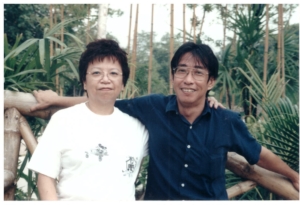 That is what our zero to hero, Tommy, a 28-year-old, strong-willed gentleman suffered and is still suffering from. Tommy did not live an ordinary life like You, Me or Harry (who is Harry??). It was rather interesting. He was given birth to a mother which he does not know who it is till now. Yes, he was adopted by a Singaporean couple from China when he was around 1 to 2 years old.
That is what our zero to hero, Tommy, a 28-year-old, strong-willed gentleman suffered and is still suffering from. Tommy did not live an ordinary life like You, Me or Harry (who is Harry??). It was rather interesting. He was given birth to a mother which he does not know who it is till now. Yes, he was adopted by a Singaporean couple from China when he was around 1 to 2 years old.
Zero to Hero – Arshad (Adam Levine)
/in Zero To Heros /by B2SA Fun fact, Adam Levine (an American singer, songwriter, and actor; the lead singer for the pop rock band Maroon 5) had ADHD.
Welcome back readers, I believe you were inspired by Lily – the Beethoven, a deaf individual who creates an inclusive society and promotes deaf awareness through sign languages. Today, let me introduce you to Muhammad Arshad Fawwaz an awesome individual who accomplished great heights, despite his challenges. Curious? Let us read on.
How do you feel when you have your own youtube channel? Being musically trained by a vocal coach, Deke Sharon from Pentatonix (A America a-cappella group), and Dylan Foster the vocal instructor, from the world’s most famous a cappella groups, Flying Pickets. And create your own short film, despite being AUTISTIC?!
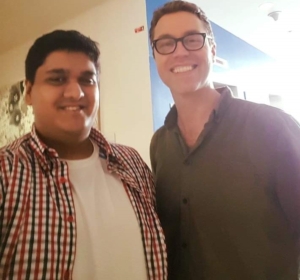
Arshad with vocal coach Deke Sharon.
I can certainly tell you how I feel when meeting someone in Singapore who has Autism and ADHD, accomplishing these feats. Shocked?!
Zero to Hero – Noel (The Iron Man)
/in Zero To Hero - Noel (Ironman), Zero To Heros /by B2SHeyoo everyone! You know something?! Stroke is Singapore’s fourth leading cause of death, comprising 10–12% of all deaths 1.
Its prevalence is estimated at 3.65% for adults > 50 years of age. Approximately three-quarters of strokes are
ischemic (restriction in blood supply to tissues, causing a shortage of oxygen and glucose to keep tissue alive) in nature and one-quarter are hemorrhagic. Stroke is the largest cause of long-term physical disability
in Singapore and with a rapidly aging population, the burden of stroke is expected to increase exponentially in the none
too distant future, posing challenges to the healthcare system and society.
Anyway, how was the story of our Wonder-woman? Inspiring eh?! Such an awesome lady.
This time we gonna read about a man with titanium in his head, the Ironman. He literally has titanium in him (will illustrate it soon). His name is Noel Peter Xavier … In short, we call him Noel.
Zero To Hero – Lily (The Beethoven)
/in Zero To Heros /by B2SFun Fact: people with hearing impairments prefer to be called “deaf” or “hard of hearing. What do you think a life of a deaf person is like? Silent? A world where everything is quiet? A world where you can’t hear and indulge in music? I thought the same thing until I met Lily Goh, a […]
Zero To Hero – Darren (The Unstoppable)
/2 Comments/in Zero To Heros /by B2S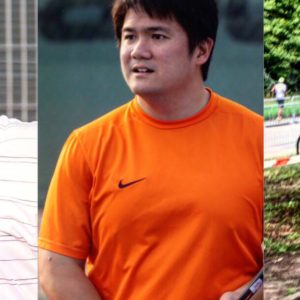
When 150kg
Attention Deficit Hyperactivity Disorder (ADHD) is a neurodevelopmental disorder; this means that the symptoms are present from an early age, usually before seven years old. As the name suggests, the symptoms of ADHD are characterised by serious and persistent difficulties in three areas, namely: inattention, impulsivity and hyperactivity.
Did you know, a survey amongst 2,400 children aged 6-12 in Singapore indicated that close to 5% of Singaporean kids had disruptive behaviour disorders. Worldwide ADHD rates are around 5%?
Memory boost to success
/in Uncategorized /by B2SDo you know something, Alex Mullen (born March 3, 1992) is an American memory grandmaster and medical student, and 2015, 16 & 17’s, IAM world memory champion?
He is the first American to win the World Memory Championships and the highest point-scorer in the 24-year history of the competition. He is a holder of seven memory world records, ranking as a top memory athlete in the world.
Wow! A young chap who received so many major awards of success just by using his memory? How?
Zero To Hero – Navin (professor X)
/2 Comments/in Zero To Heros /by B2SDo you know, that Cerebral palsy (CP) is the most common motor disability in childhood? According to the population-based studies from around the world report prevalence estimates of CP ranging from 1.5 to more than 4 per 1,000 live births or children of a defined age range. And about 1 in 323 children has been identified with CP according to estimates from Centres for disease control and prevention’s (CDC) Autism and Developmental Disabilities Monitoring (ADDM) Network.
As we see, there are many people around us who when through cerebral palsy too. One of them is Navin Nair. Despite his physically limiting challenge he fought through his obstacles and use it as a stair to climb up to his success.


